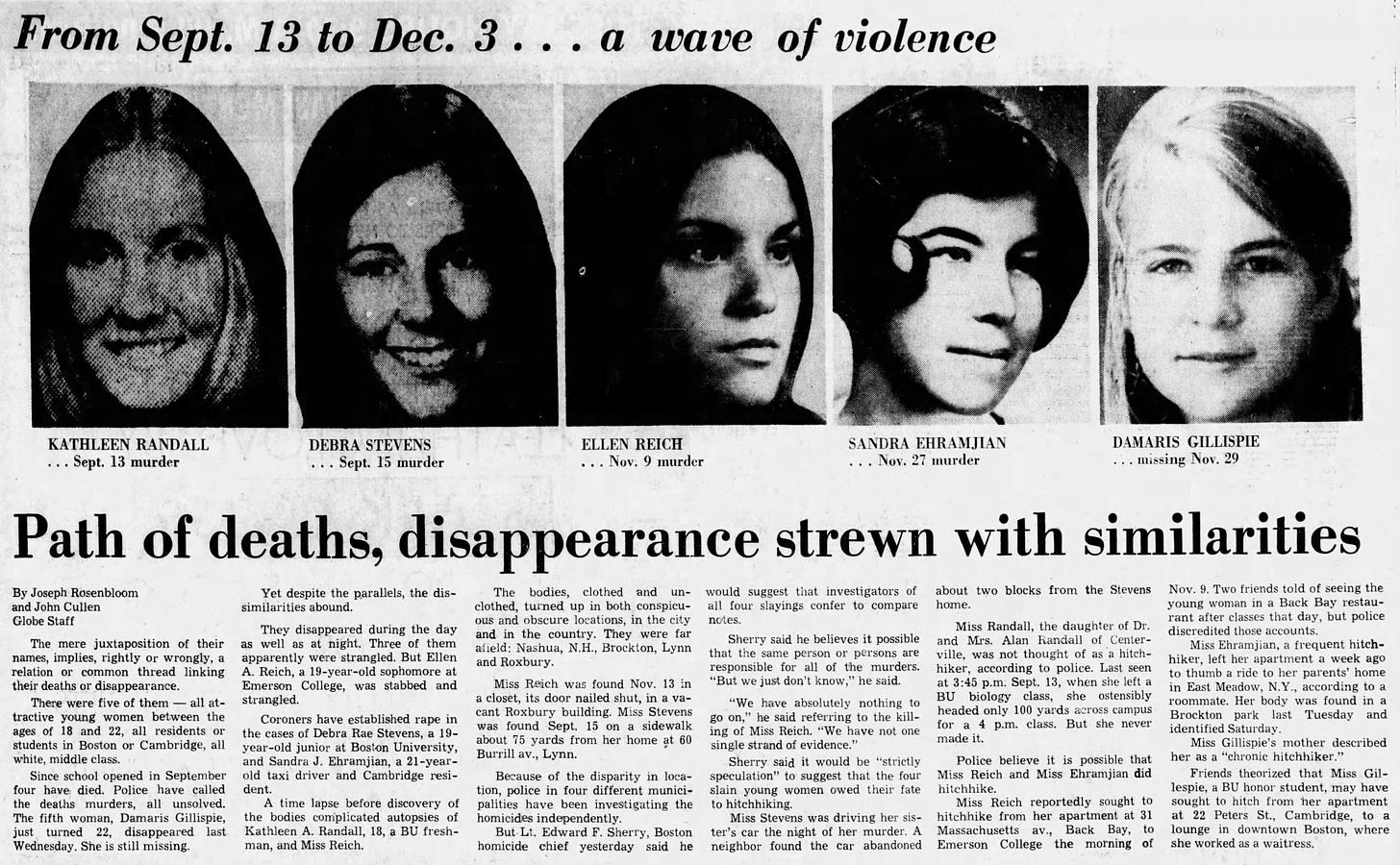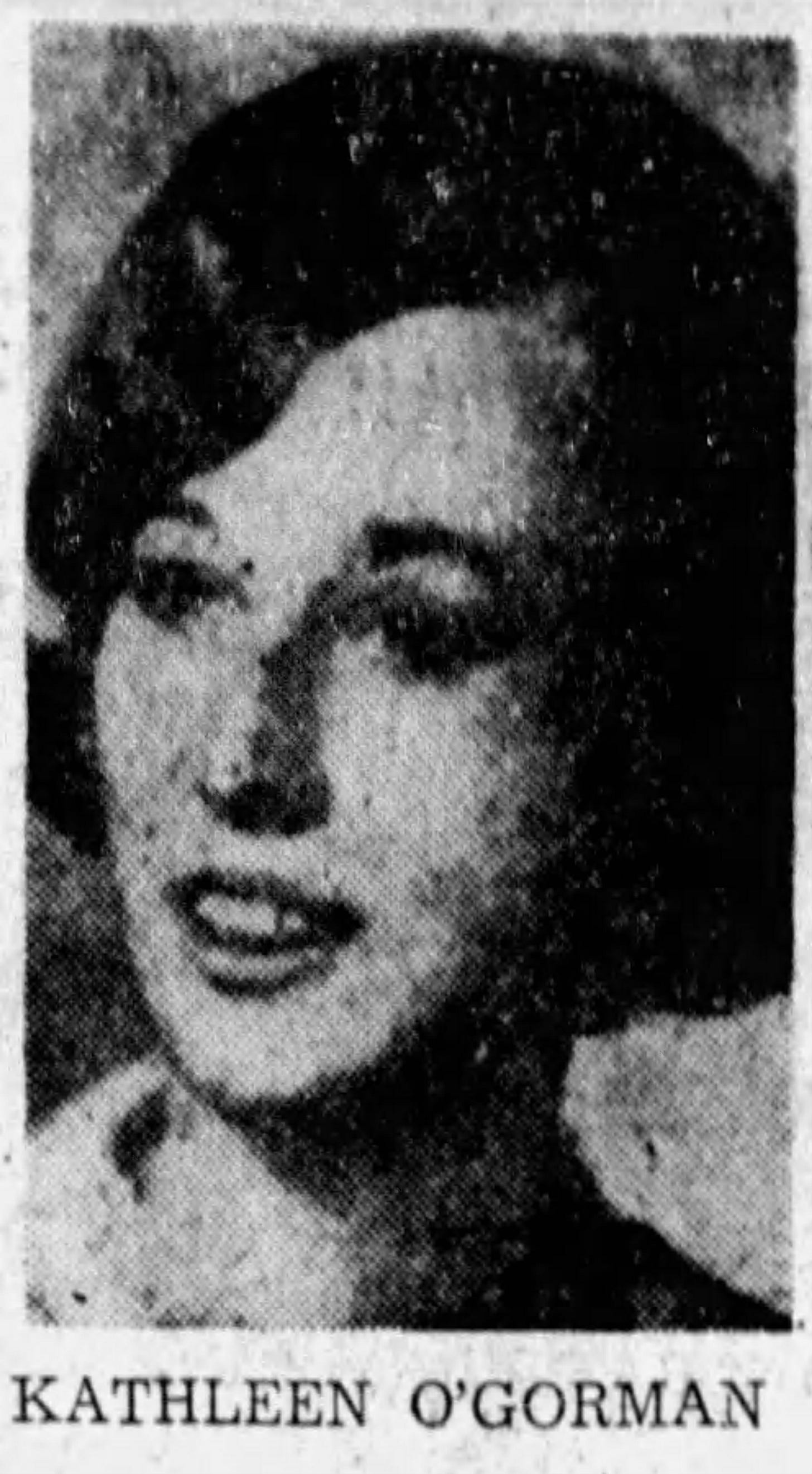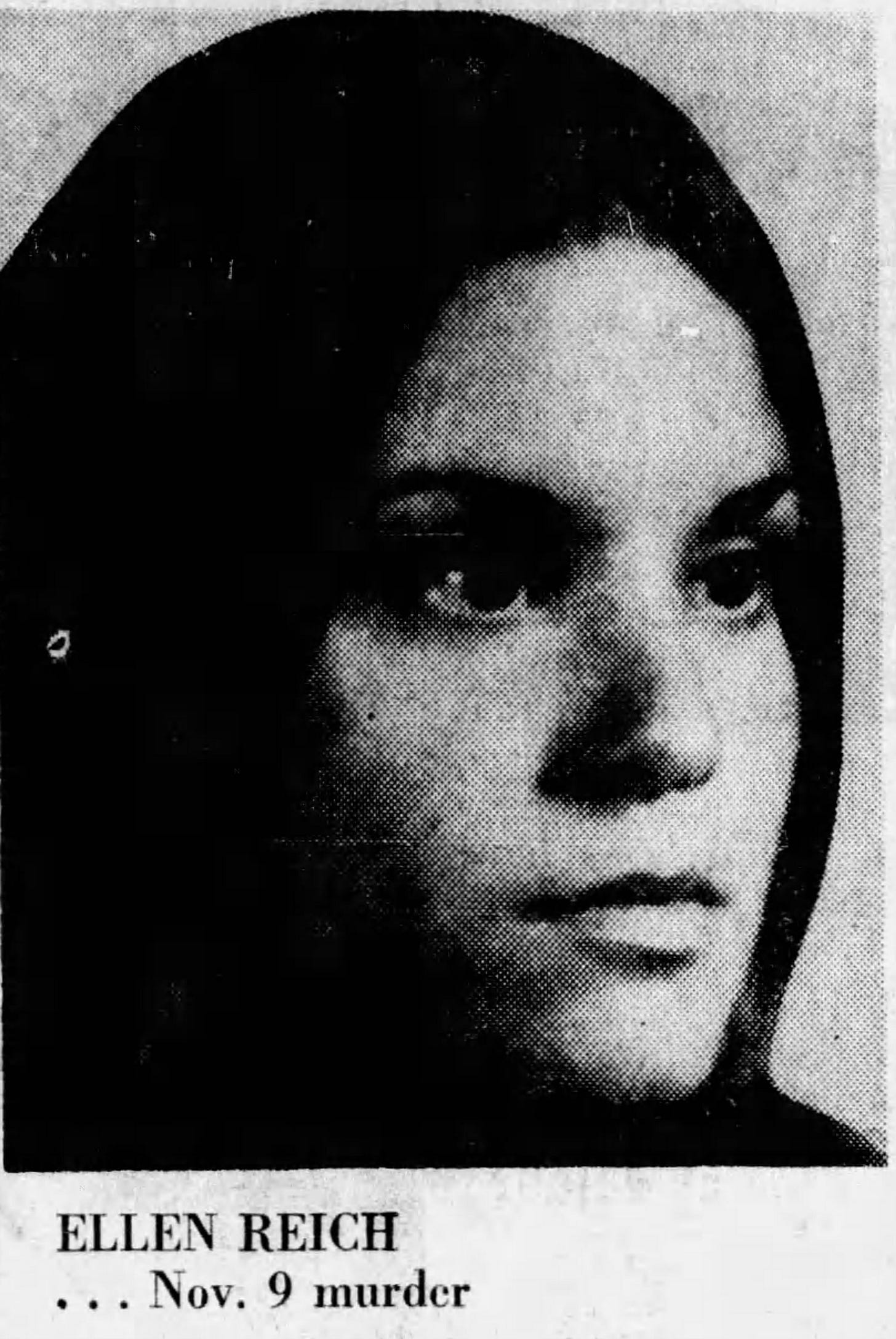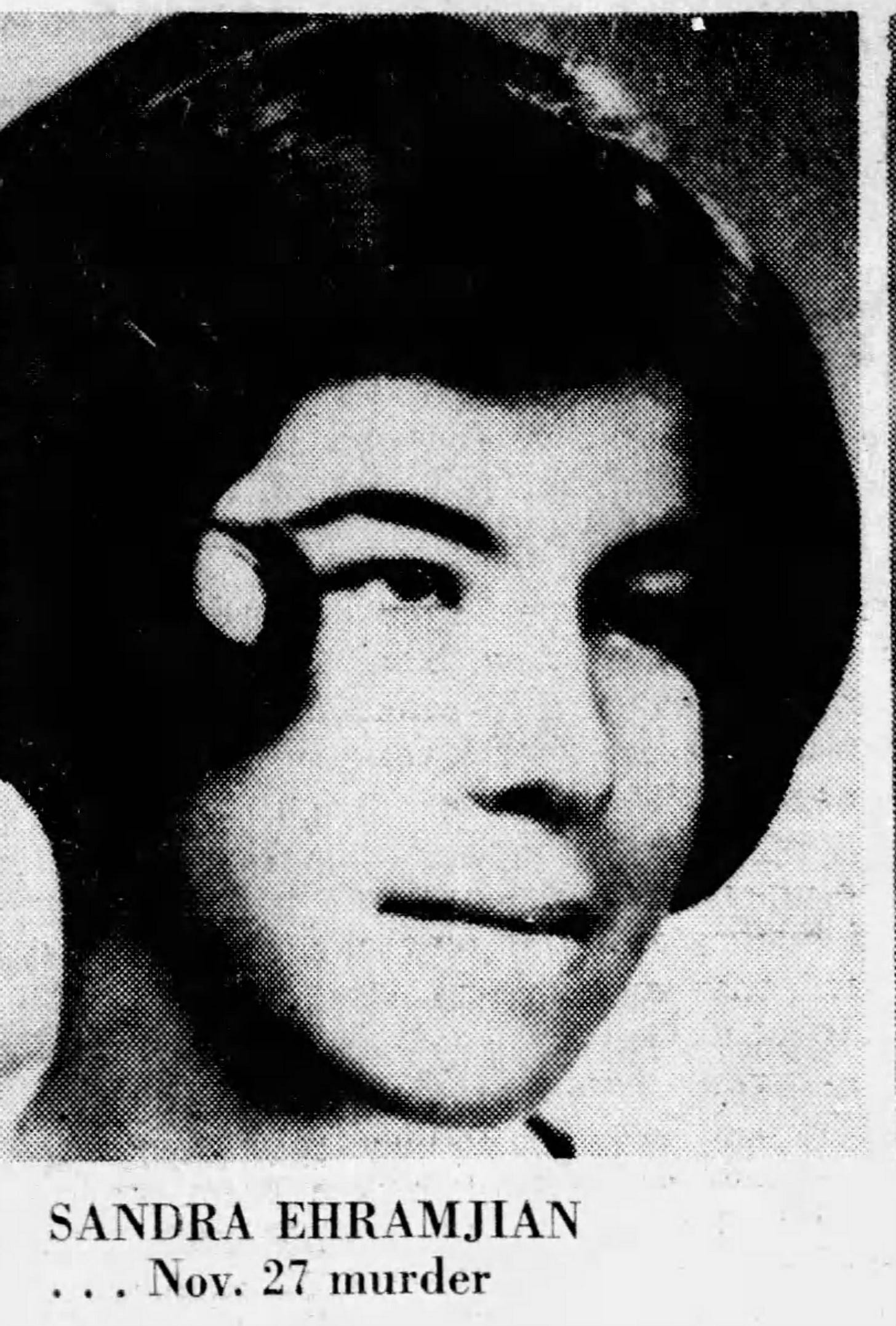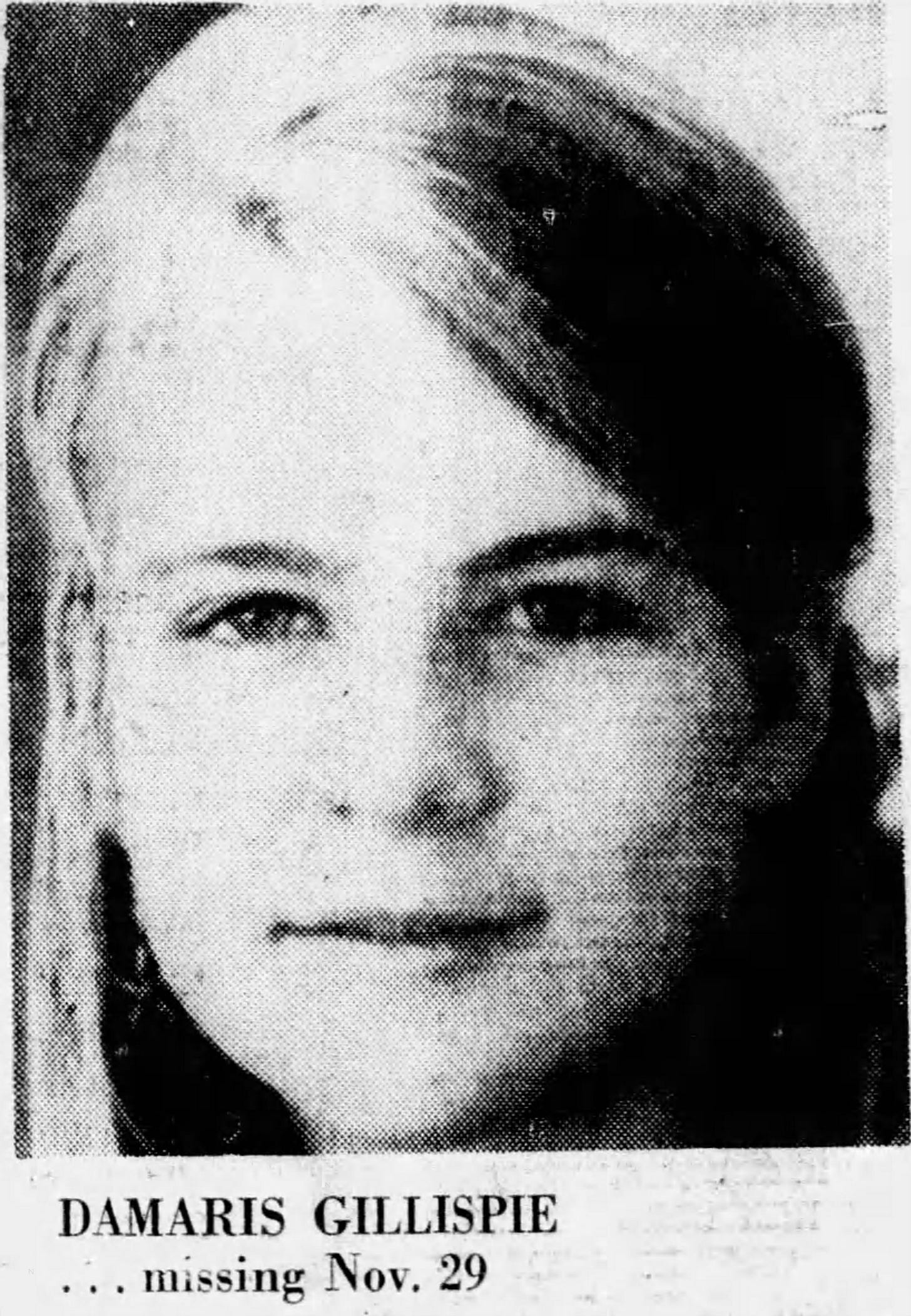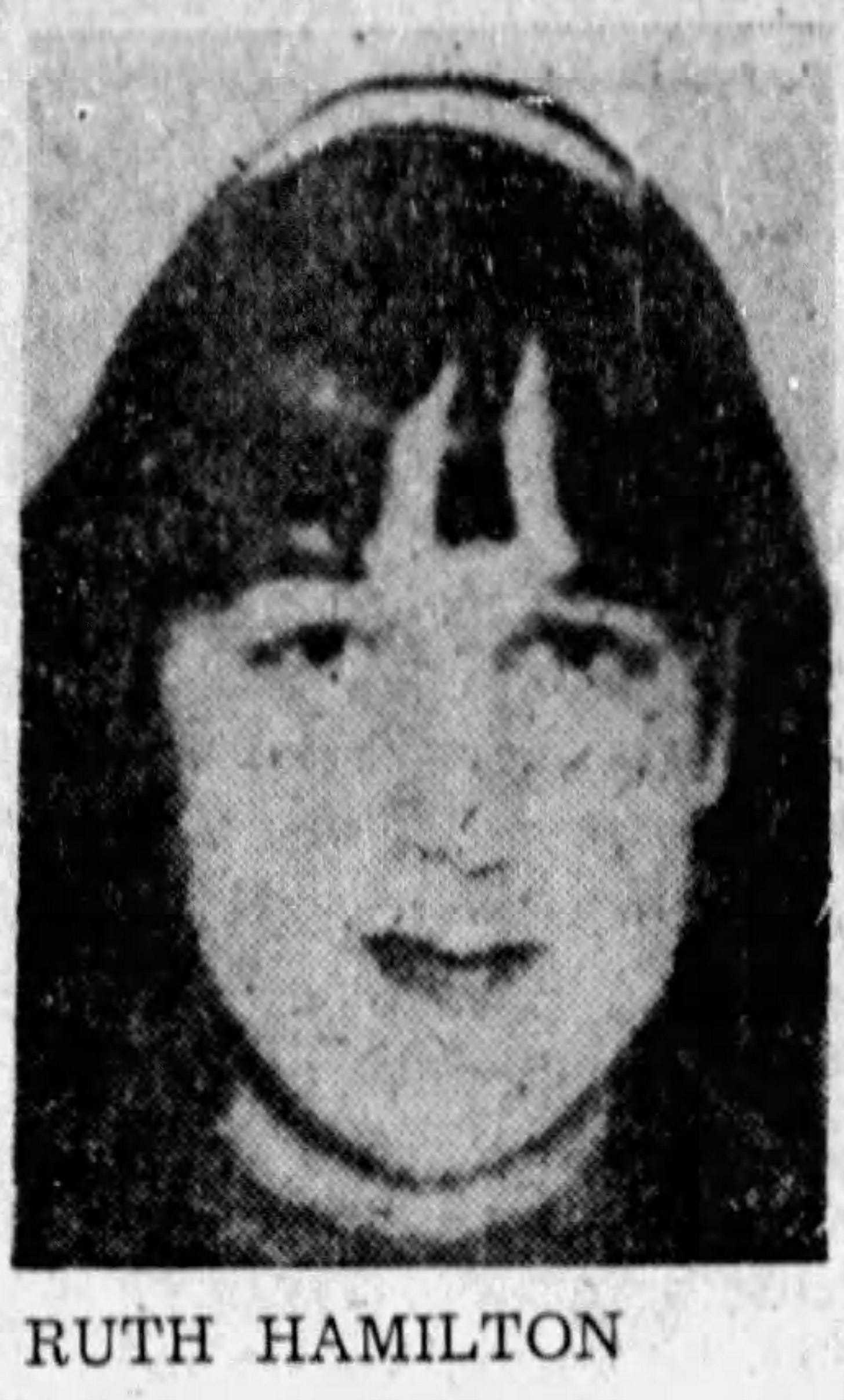Riding With A Killer: Anthony Jackson and the Boston "Hitchhike Murders"
In late 1972, police in Boston, Massachusetts, and the surrounding area were on high alert. They were on the hunt for a possible serial killer who seemed to be targeting female college students.
Background
In late 1972, police in Boston, Massachusetts, and the surrounding area were on high alert. They were on the hunt for a possible serial killer who seemed to be targeting female college students.
Dubbed by the press as “The Hitchhike Murders,” due to the fact that several of the victims were last seen hitchhiking, by late December, there were at least six victims whom some authorities believed may be connected.
The victims were all between 18 and 23 years old and resided in the Boston-Cambridge area. Most were college students who were known to hitchhike to and from classes or work. Many of the victims had been strangled and sexually assaulted.
Timeline of Events (July - October)
On July 3, 1972, 19-year-old Kathleen O’Gorman left her home in Brockton, Mass, to take the bus to work. She never returned home. Six days later, on July 9, her nude and battered body was found in the Blue Hills Reservation state park in Milton, a suburb just south of Boston.
The bus driver who regularly drove Kathleen did not remember her getting on the bus on the morning she disappeared.
Described as a quiet girl who kept to herself and did not socialize much, Kathleen did not fit the profile of some of the other victims who were described by the media as being involved in the “youth culture” of early 70s Boston and Cambridge. Kathleen was said to be someone who stayed to herself and, according to an aunt, “she would never hitchhike. She never did. She was a timid girl.”
Nevertheless, her case is often included in the so-called “Hitchhike Murders.”
On September 13, 1972, 18-year-old Kathleen Ann Randall disappeared from the campus of Boston University just nine days into her first semester. Weeks later, on October 1, her body was found in Nashua, New Hampshire, nearly 50 miles away. She had been strangled.
Kathleen’s friends described her as having an active social life, someone who enjoyed meeting new friends and was self-confident and enthusiastic about life. Kathleen, who was studying to be a doctor, was serious about her education and was someone who rarely drank and did not use drugs.
According to one of her good friends, Kathleen sometimes hitchhiked from her dormitory to the university’s main campus and had previously had no bad experiences. The same friend said, “She was trusting of people she met.”
In the early morning hours of September 15, less than two days after Kathleen Randall vanished from the campus of Boston University, another BU student was found murdered under mysterious circumstances.
Around 6 a.m., a man walking his dog found the body of 19-year-old Debra Rae Stevens. She was found sprawled on the sidewalk just 75 yards from her home in Lynn, Mass. An autopsy revealed that she had been strangled, and though she had been found nude from the waist down, there did not appear to be signs of sexual assault.
Police also found a car belonging to Debra’s sister, Andrea, parked in front of a driveway two blocks away. Upon closer inspection, they found what appeared to be two bullet holes in the interior of the car. However, no blood was found in the vehicle or on Debra’s body, leading investigators to believe that she had been killed elsewhere.
Debra Stevens was a full-time student at BU who also took night classes at Northeastern University in Boston. She was studying to be a physical therapist and also worked at a nursing home.
Described as a “happy girl who was extremely well-liked,” Debra preferred getting together with close friends as opposed to partying with a group. Debra’s former roommate recalled that both she and Debra frequently hitchhiked from their dormitory to classes without any apprehension.
However, on the night she was murdered, Debra borrowed her sister’s car to attend a night class at Northeastern. After checking with the university, it appeared that Debra did not attend that evening’s class, and it is speculated that she may have given someone a ride who ended up taking her life.
Timeline of Events (November - December)
On November 9, 1972, 19-year-old Emerson College sophomore Ellen Reich left her apartment on Massachusetts Avenue in Boston to hitch a ride to her afternoon class.
Four days later, on November 13, her body was discovered nailed inside a closet in a vacant apartment in Roxbury. Her cause of death was originally ruled to have resulted from strangulation and stabbing.
However, her body was later exhumed, and it was determined that what had originally been thought to be stab wounds were actually gunshot wounds. This would later prove to be an important detail in the case.
Originally from Hackensack, New Jersey, Ellen had come to Boston to study law with the intention of becoming a lawyer. Though she was described by her roommate as “a little afraid of people” and meek, she also liked meeting new people and had no fears about hitchhiking alone or going out to bars and clubs by herself.
On November 27, 1972, 19-year-old Sandra Ehramjian left her apartment on Putnam Avenue in Cambridge to hitch a ride to visit her family in New York. The following day, a body, which was later identified as Sandra’s, was found dumped in D.W. Field in Brockton. She had been strangled and sexually assaulted.
Sandra Ehramjian had left Long Island in June 1971 and moved to Northampton, Mass. The following year, she arrived in Boston looking to find her way. At the time of her death, she was living with friends in Cambridge and working as a taxi driver.
She had many friends and was described as someone who loved and trusted people. According to a friend, “She would see the best she could in people, she wouldn’t suspect the evil…”
On November 29, 1972, the day after the body of Sandra Ehramjian was found in a Brockton park, 21-year-old Synge Gillispie disappeared after leaving her apartment on Peters Street in Cambridge. It is believed that she attempted to hitch a ride to her job as a waitress at the Jazz Workshop in Boston—something she did regularly.
Immediately following her disappearance, Gillispie’s family members, along with police, launched extensive efforts to find her, including setting up a hotline and distributing leaflets with her picture and description throughout colleges and universities in Boston and Cambridge.
On December 6th and 7th, the hotline received several calls from a man who police believed was in his late 20s or early 30s. The man described certain clothing that Synge was wearing when she disappeared, leading police to believe he had knowledge of her abduction. However, the man never called back.
Synge Gillispie was just three days shy of her 22nd birthday when she disappeared on November 29 and was only a month away from graduation at Boston University. She was an art major and an honor student who intended to pursue a career in art therapy. Originally from Bedford, New York, she was known to be shy and unassuming and enjoyed music and spending time with friends.
On December 24, 1972, the body of art teacher Ruth Hamilton was found hidden under her roommate’s bed in their Cambridge apartment. Concerned family members had contacted police after they had not been able to reach her for the previous three days. At the time, Ruth’s roommate was away on vacation in Puerto Rico.
Ruth was found in her underwear, and the cause of death was “traumatic asphyxia,” which investigators believe was a result of being suffocated with a pillow. Since there was no evidence of a struggle or break-in, police theorized that Ruth either knew her killer or let him in.
Those who knew Ruth Hamilton described her as shy and hardworking. She did not have many friends and kept to herself. Much like Kathleen O’Gorman, Ruth did not seem to fit the profile of the other victims except for her age and location.
Arrest of Anthony Jackson
Two days later, on December 26, 1972, around 8 p.m., two Cambridge police officers spotted a dark-colored Cadillac slowing down to approach a woman on the street. The driver appeared to be trying to lure the woman into the car. The officers decided to follow the car, which then sped away, initiating a high-speed pursuit.
Another officer joined the chase, and eventually, the driver of the Cadillac left his car and fled on foot. As officers caught up with the man, he pulled out a gun and fired shots at them.
The officers returned fire, and the man dropped to the ground but got back to his feet and continued running. He was located several blocks away, lying in the street with a gunshot wound to his abdomen. He was wearing a holster, but officers did not recover a gun at the scene.
At the hospital, police learned that the man was Anthony J. Jackson, who also went by the alias Wayne Eubank, among others. Jackson was a 33-year-old criminal and pimp who lived with several underage prostitutes at 154 Washington Street in Dorchester.
As Jackson was being held on charges related to the shootout with Cambridge police, investigators dug into his past and discovered he had some disturbing prior charges, including numerous assaults and an attempted rape.
Connection to the “Hitchhike Murders”
Immediately following his arrest, Jackson began to try to cover his tracks. He called the girls he lived with at the Washington Street apartment and told them to leave and to take all of his belongings with them.
When police arrived at the apartment three weeks later, they found it nearly bare. However, they found a milk carton containing several nails. These would later be matched to the same nails that were used to seal Ellen Reich’s body in the closet of a vacant apartment.
In early January 1973, Cambridge police recovered Jackson’s gun from a snowbank near the scene of his shootout with officers. This gun was later matched to bullets taken from Ellen Reich’s body.
Jackson also contacted a man named Donald McDonald and told him to contact his ex-wife and tell her to get rid of a green metal box, which he told McDonald could convict him of murder.
She did as instructed and threw the box into the Charles River. However, police were able to recover it, and when they checked its contents, they discovered hundreds of photos of nude women, including Synge Gillispie, who was still missing at the time.
After interviewing Patricia Archer, one of the girls who worked as a prostitute for Jackson, on the day that Gillispie went missing, Jackson told her that he had murdered a woman and had been driving around with her body in the trunk of his gold 1967 Cadillac. He told her to help him clean the blood from the car.
Jackson then gave her two rings, a fur-lined coat, and a pair of bloody shoes, all of which were later identified as belonging to Synge Gillispie.
Then, on February 3, 1973, two children discovered the nude remains of Synge Gillispie lying in the snow in the Pine Woods section of Billerica, Mass., about 20 miles northwest of Boston.
Legal Proceedings
In addition to the charges stemming from the shootout with Cambridge police, Jackson would ultimately be indicted for first-degree murder in the deaths of Ruth Hamilton, Ellen Reich, Sandra Ehramjain, and Synge Gillispie.
His histrionic and antisocial behavior caused several delays and postponements in his trials. He fought with and fired several attorneys before deciding to represent himself. He tried to harm himself numerous times, including swallowing a razor blade and attempting to jump out a window during his trial.
He was eventually convicted of the murders of Ruth Hamilton, Ellen Reich, and Synge Gillispie. Despite damning evidence, he was somehow acquitted of the murder of Sandra Ehramjain.
When it was all said and done, Jackson was given a 15-to-20-year sentence for armed assault with intent to murder for the shootout in Cambridge, three consecutive life sentences for first-degree murder, and two 20-to-30-year sentences for rape and unarmed robbery.
Closing Thoughts
The arrest and convictions of Anthony Jackson brought some degree of closure to the victim’s families and the community. However, according to a statement by Donald McDonald, when discussing the murders with him, Jackson allegedly told McDonald, “The one in New Hampshire isn’t mine.” Referring to the murder of Kathleen Randall.
It is a sobering reminder that there are other predators out there, and vigilance remains a necessity.
Sources:
“COMMONWEALTH vs. ANTHONY J. JACKSON.” JUSTIA U.S. Law, https://law.justia.com/cases/massachusetts/supreme-court/volumes/391/391mass749.html
Lowe, Kylie. “The Victims of the Hitch-Hike Murderer (Massachusetts)” Dark Downeast, https://darkdowneast.com/hitchhikemurderer/
“Anthony J. Jackson” Murderpedia, https://murderpedia.org/male.J/j/jackson-anthony.htm
Brine, Dexter. “Jackson convicted of Gillispie murder.” The Boston Globe, 23 November 1978, https://www.newspapers.com/image/436674448/?match=1&terms=demaris%20gillispie
Smith, Lucinda & Wermiel, Stephen. “7 shy women-they trusted alike, died alike.” The Boston Globe, 18 March 1973, https://www.newspapers.com/image/435873689/
Pearson, Anthony. “BU coed found dead near Lynn home.” The Boston Globe, 16 September 1972, https://www.newspapers.com/image/435208004/?match=1&terms=debra%20stevens
Hammond, James H. “Jackson jury told of picture.” The Boston Globe, 17 April 1977, https://www.newspapers.com/image/436593051/?match=1&terms=ehramjian




